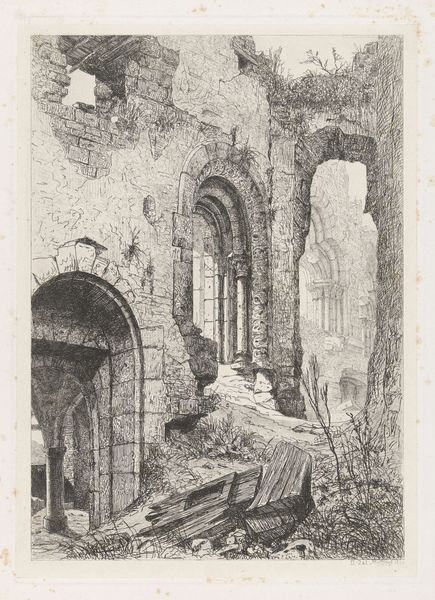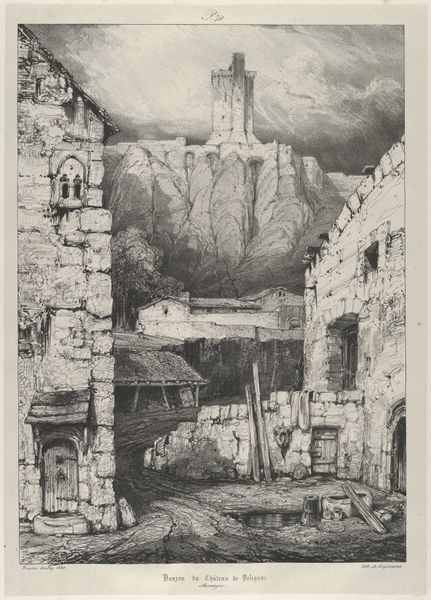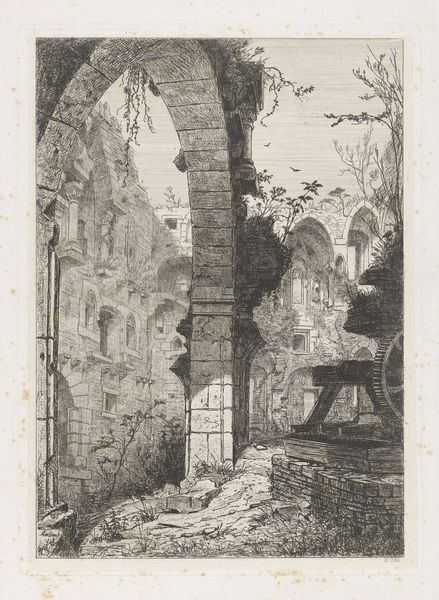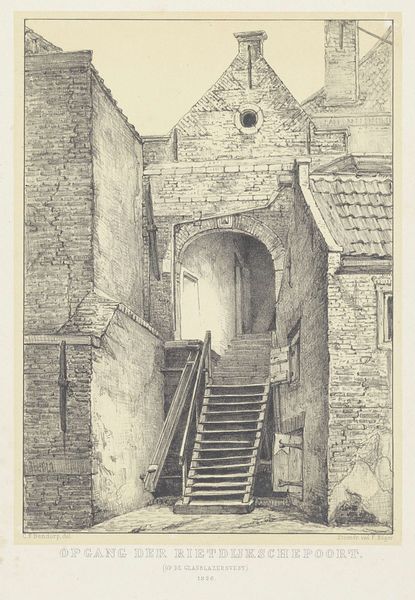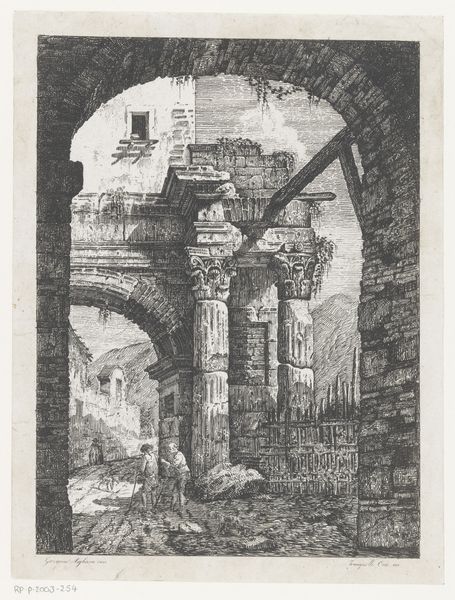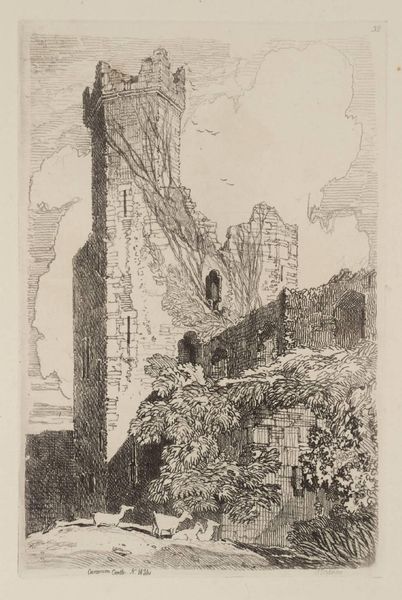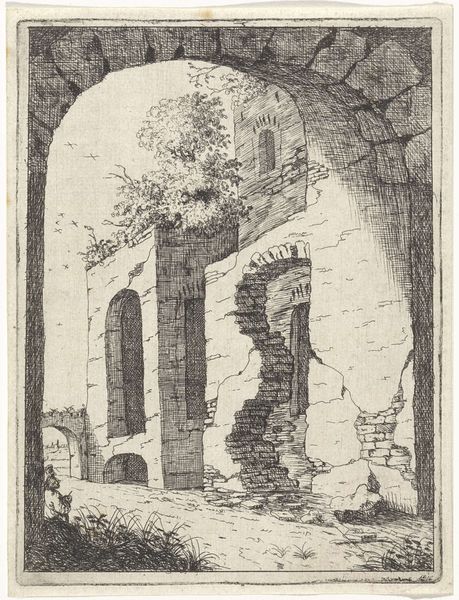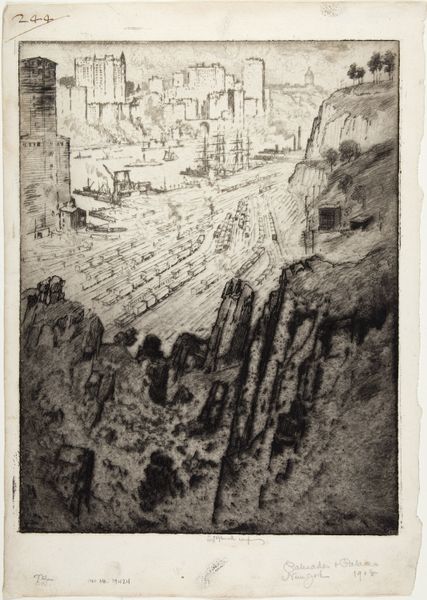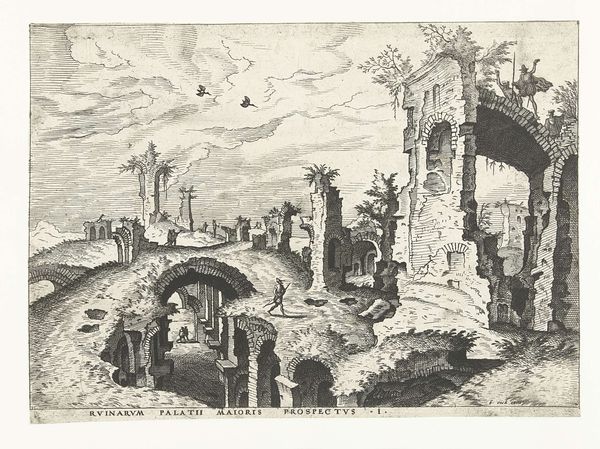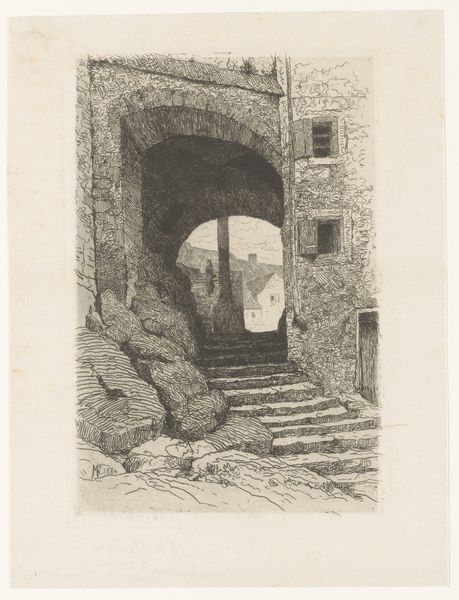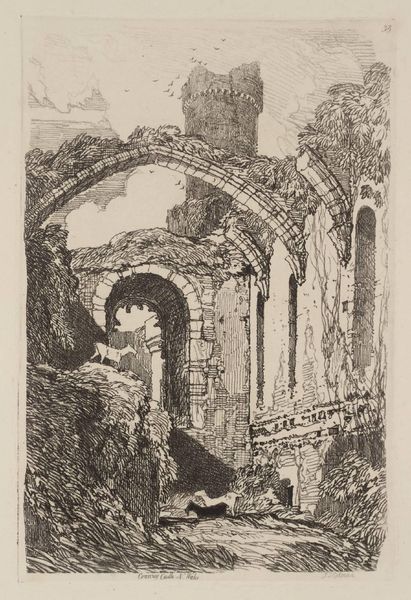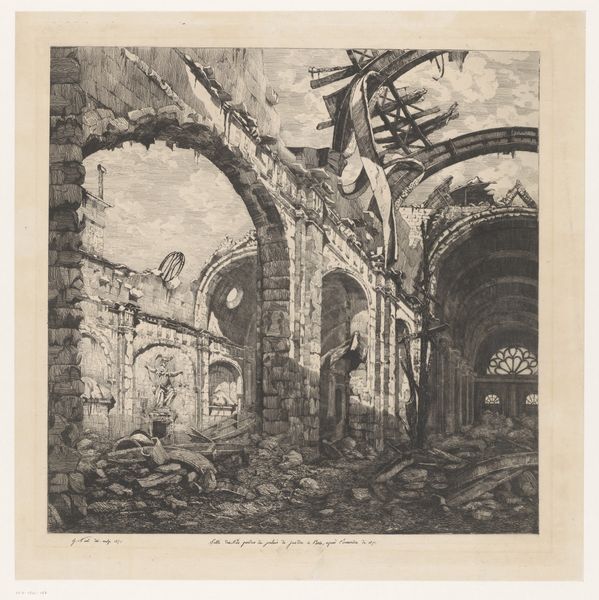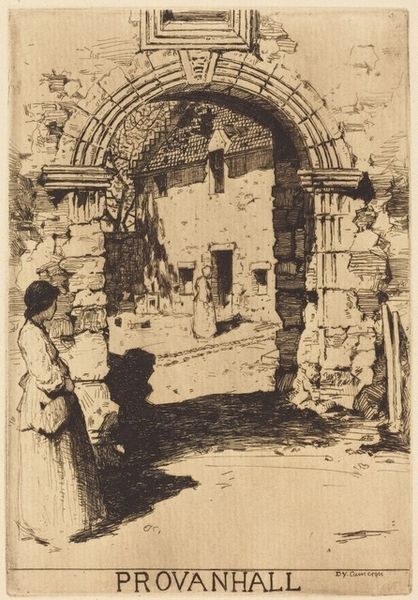
Dimensions: height 323 mm, width 234 mm
Copyright: Rijks Museum: Open Domain
Martinus Antonius Kuytenbrouwer Jr. made this etching of the Ruïne van kasteel Bourscheid, or the Ruins of Bourscheid Castle, in the Netherlands. This image embodies the Romantic era's fascination with ruins and the sublime power of nature over human endeavors. The crumbling castle evokes a sense of history and the transience of human power structures, reflecting a broader cultural interest in the medieval past during the 19th century. Consider the socio-political context: the Netherlands, like many European nations, was grappling with rapid industrialization and urbanization. Artists like Kuytenbrouwer often turned to landscapes and historical subjects as a form of cultural commentary, perhaps critiquing the present by evoking a romanticized past. The Rijksmuseum's collection of Dutch historical prints and drawings provides further context for this work, showing how artists engaged with national identity and historical narratives. Examining these resources helps us understand the meaning of art as contingent on social and institutional contexts, constantly shifting with historical interpretation.
Comments
No comments
Be the first to comment and join the conversation on the ultimate creative platform.
